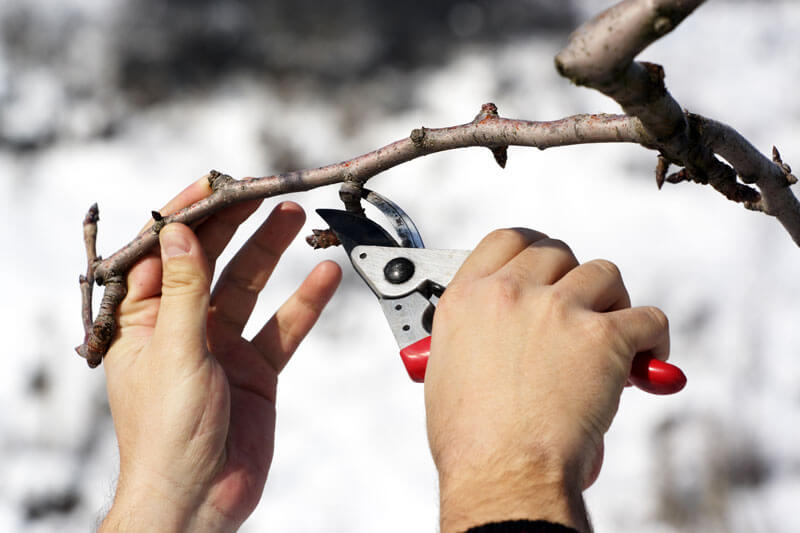Pruning in winter will help your landscape flourish and stand apart come spring. Knowing when to prune and how much takes forethought and experience to get the job done properly. Pruning is often considered to be one of the most difficult gardening practices and surprisingly, winter is a great time to provide maintenance services to your garden’s plant life.
Plant and Pruning Considerations
It is common to think that when you start to prune and trim, you can go from plant to plant until the job is complete. But, each species of plant requires different considerations.
A general rule of thumb for plants that bloom before May is to trim them after they bloom. For plants that bloom after May, trim them during the winter months before new growth begins.
Plants to Prune During Winter
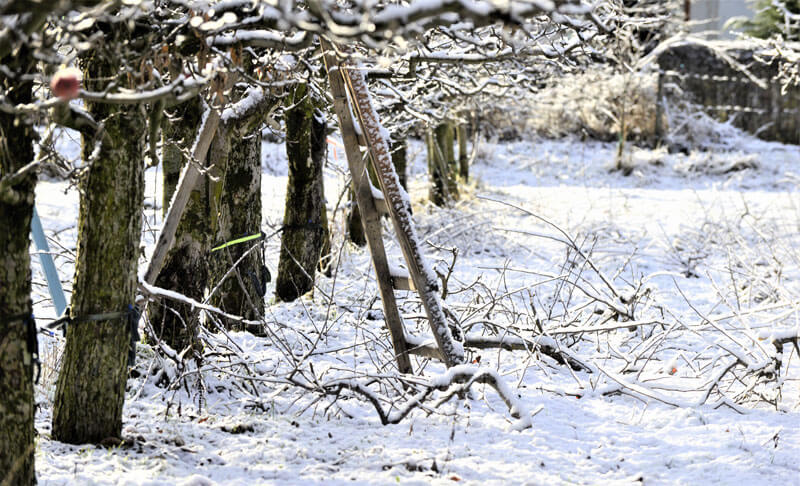
Approximately 90% of deciduous plants can be pruned in the winter. Once your shrubbery or trees go dormant, prune away dead or diseased areas. Just remember, fruit trees are the exception as they should be pruned after the first fruit falls.
- Deciduous Shade Trees: Oak, Linden, Maple, and Ash
- Deciduous Fruit Trees: Apple, Peach, Pear, Plum, and Cherry
- Broadleaf Evergreens: Holly and Magnolia
- Needle-Leaf Evergreens: Spruce, Juniper, Cypress, and Arborvitae
- Grapevines
- Roses
- Ornamental Trees: Dogwood, Snowbell, and Japanese Maple
How do you start pruning a tree or shrub?
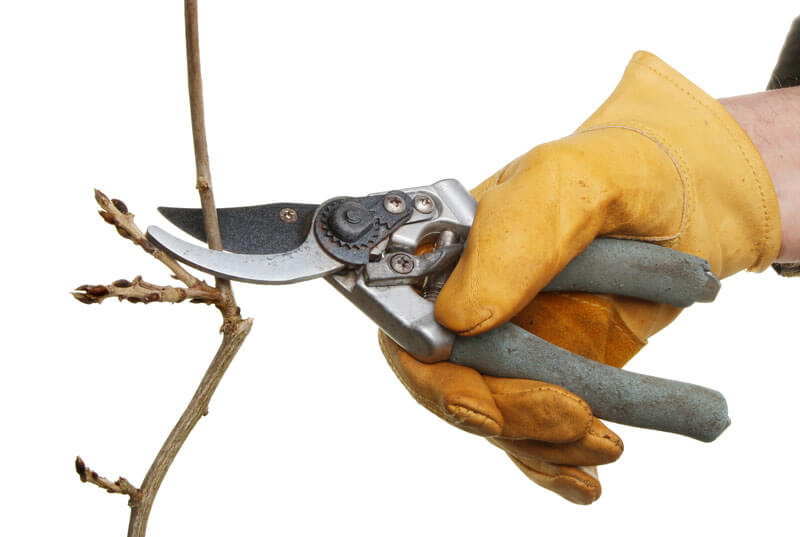
Pruning isn’t just about aesthetics. It is standard practice to keep trees and shrubs under control and healthy. To properly prune, it is important to step back and look at the plant as a whole. Keep in mind that you aren’t pruning to remove everything.
Instead, consider selective removal. Decide what needs trimming for safety, looks, and health before you start cutting. Once you’ve looked at every shrub and tree branch, follow these steps:
Trim with Purpose
Prune your plants to remove dead or diseased areas. Identify the issues that your trees or shrubs have and address them immediately. If your shrubs are looking overgrown, focus on their natural shape and try to recreate it. When pruning for the health of your plant, it shouldn’t look like you did anything at all.
Remove Unwanted Branches
Hazardous and low hanging branches can be especially dangerous during winter. Ensure that your landscape is safe by trimming back shrubs along walkways and stairs. Protect your greenery by minimizing the amount of contact they have with rock salt and brine.
Get Rid of Crossing Branches
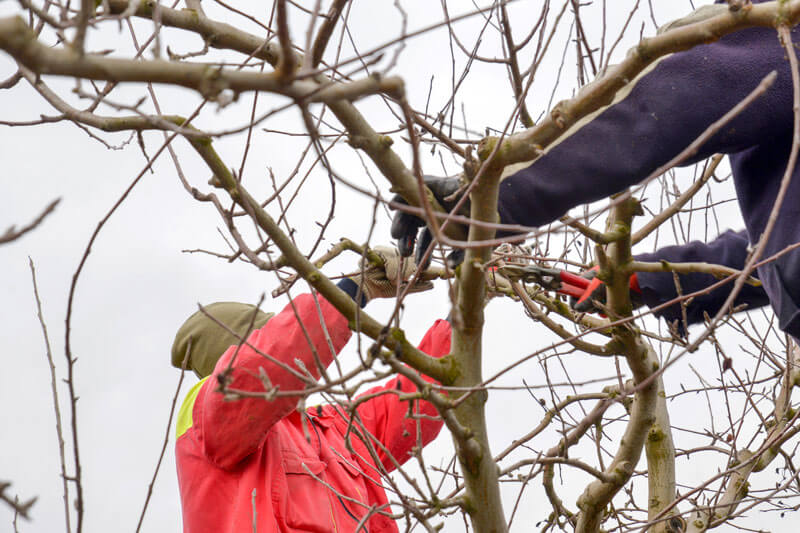
For safety and appeal, crossing or rubbing branches should be removed. Begin by eliminating larger crossing branches and then move to smaller ones. Keep only the rubbing branches that will disfigure the tree if removed.
Remove Excess Branches in the Canopy
When your trees or shrubs go unpruned, they can look cluttered and distracting. Thinning the excess branches will keep your tree from getting overcrowded, keeping the tree safe and looking good.
Look for Health Issues
Over the year, your tree can undergo a lot of health issues. Fungus and dangerous bugs can be detrimental to your tree. If these issues aren’t removed, your tree won’t last long.
Take it Slow

Rome wasn’t built in a day and your tree or shrub probably won’t be looking its best after only 10 minutes of pruning. Like any work of art, it takes time and patience to master correctly.
Take a step back during the process to look at your progress. Make sure you’re using proper pruning techniques and cuts. If you want your mature trees and full-grown shrubs to last, you’re going to need to be mindful of every cut you make.
Pruning for your garden is like pruning for trees and shrubs. Your plant’s stem needs to be able to see the sunlight. That means getting rid of overcrowding vines and creating space for sunlight.
What Tools do I Need for Pruning in Winter?
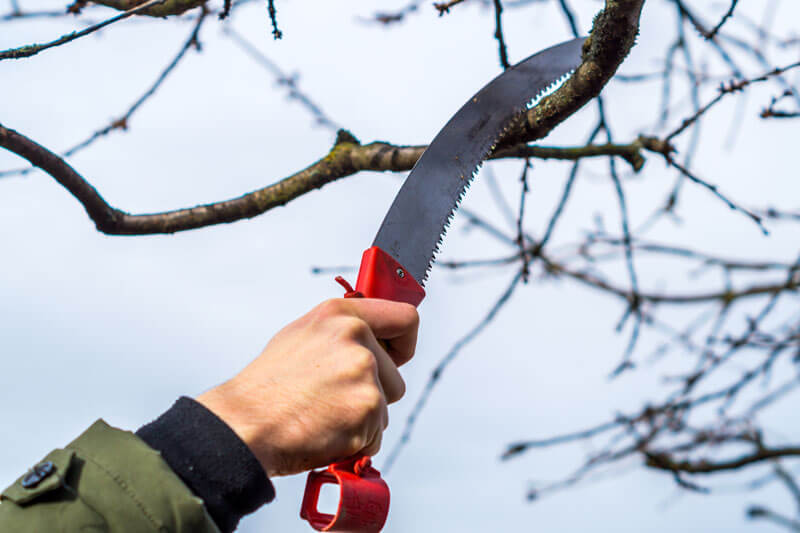
The tools you are going to need for pruning really depends on what you are pruning. Smaller branches that are up to ¾ inch can be trimmed using hand pruners. Loppers will be needed when a branch is up to two inches. When a branch is larger than two inches, start using a hand pruning saw.
Don’t forget the disinfectant! When pruning, the last thing you want to do is spread disease through your garden. Apply a disinfectant to your pruning tools especially when you have pruned away infected areas. Be sure to clean your tools at the end of each job.
Proper pruning in winter is exactly what your landscape needs to stay healthy and lush. Before you grab your clippers, consider the advice of an expert and contact our team of certified specialists.

